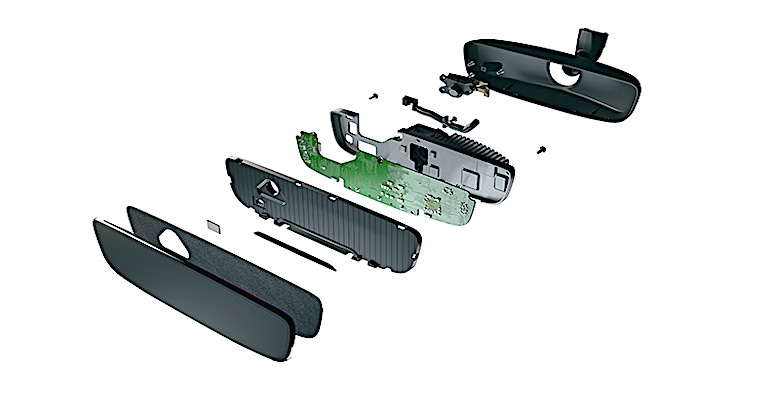Magna Packs Driver Monitoring into a Rearview Mirror
European regulators have declared that all new vehicles introduced starting in 2024 must have a driver monitoring system to address distracted and drowsy driving and that all vehicles by 2026 must have such systems.

Integrating cameras into existing models could be a challenge, but Magna has a solution that goes into the rearview mirror so that it plugs into existing models with greater ease.
A German carmaker will debut the Magna driver-monitoring mirror starting in 2024, according to Magna.
The device packs a high-resolution camera, infrared emitters, and electronic control unit into the company’s interior mirror behind the mirror glass, providing both packaging and styling simplicity. The technology will be available in regular manually-switched mirrors, automatically dimming mirrors, and in video display mirrors.
Despite having this new tech contained inside the housing, these mirrors will still be able to provide the other functions they’ve gained in recent years, such as a compass and garage door opener, according to Karteek Kesavamatham, senior manager of Product Line Management.
The system monitors the driver’s head, eye, and body movement to help detect signs of distracted behavior, drowsiness, and fatigue. During a demonstration, a connected laptop displayed the tracking of the driver’s eyes and the computer’s estimation of the driver’s awareness of the situation.
“Distracted driving remains one of the leading causes of vehicle accidents globally and many markets are consequently making driver monitoring a standard safety technology,” said John O’Hara, President of Magna Electronics and Magna Mechatronics, Mirrors and Lighting in a press release.
Existing monitoring systems frequently employ cameras that are mounted on the steering column. A problem with that location, as we experienced during an afternoon drive in the Lucid Air, is that when driving directly toward the sun when it is low on the horizon, glare from sunglasses can dazzle the camera’s view of the driver’s eyes, triggering false warnings to keep their eyes on the road.
Putting the camera in an offset and raised position avoids that problem, Kesavamatham pointed out. Additionally, that location avoids other sources of obstruction too. “We determined that the overhead module or mirror is the best location in terms of obstruction,” he said. Furthermore, the central location means that a camera with a wide-angle lens can watch both the driver and the front passenger seat occupant at the same time.
“Our driver monitoring system opens up a world of possibilities when it comes to integration with other ADAS vehicle technologies and lends itself to new mobility concepts such as authentication for ride sharing,” said O’Hara in the press release.
About the Author(s)
You May Also Like


.jpg?width=300&auto=webp&quality=80&disable=upscale)


